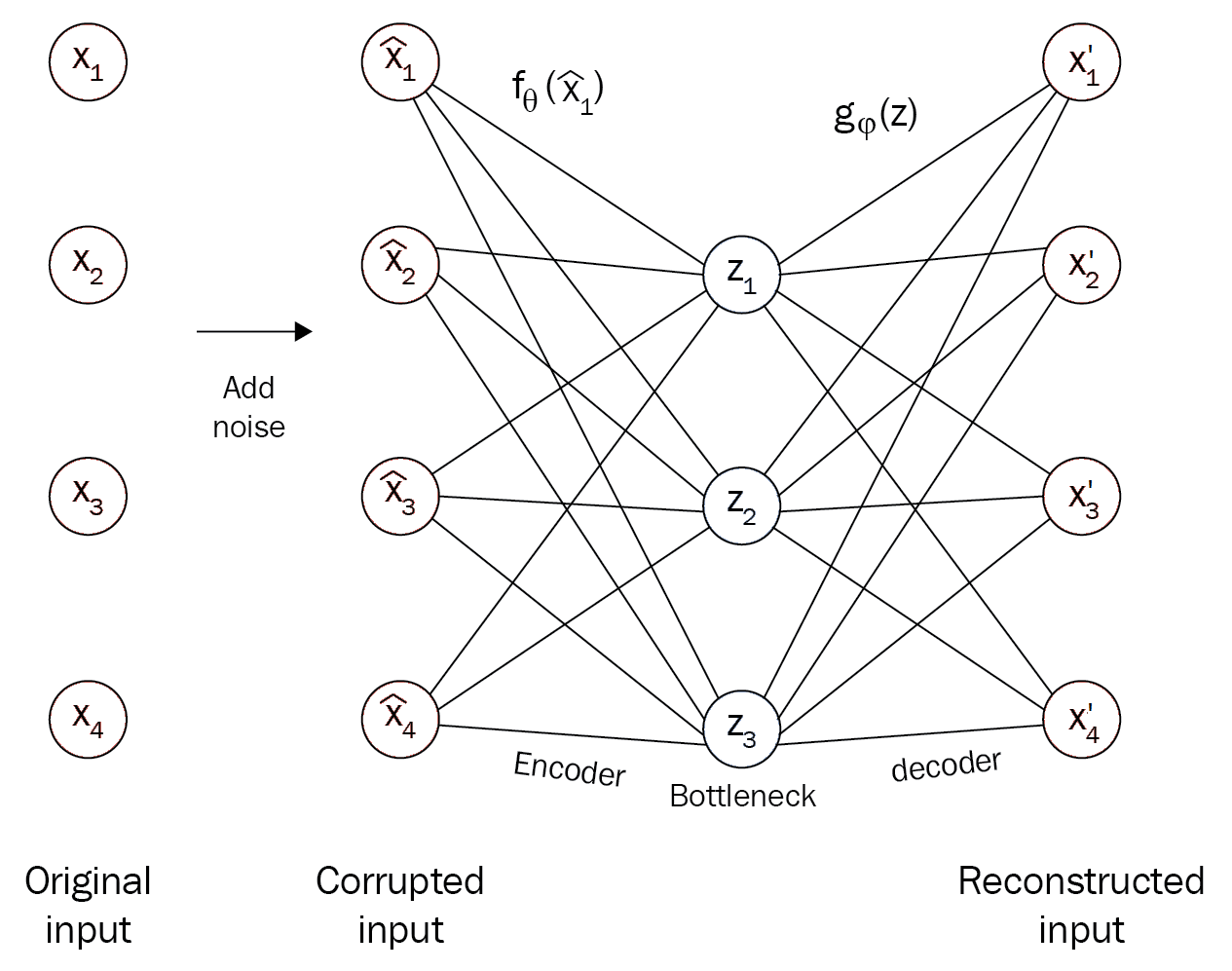DAE are another small variant of the autoencoder. They are mainly used to remove noise from the image, audio, and other inputs. So, when we feed the corrupted input to the DAE, it learns to reconstruct the original uncorrupted input. Now we inspect how DAEs remove the noise.
With a DAE, instead of feeding the raw input to the autoencoder, we corrupt the input by adding some stochastic noise and feed the corrupted input. We know that the encoder learns the representation of the input by keeping only important information and maps the compressed representation to the bottleneck. When the corrupted input is sent to the encoder, while learning the representation of the input encoder will learn that noise is unwanted information and removes its representation. Thus, encoders learn the compact representation of the input without noise by keeping only necessary information, and map the learned representation to the bottleneck.
Now the decoder tries to reconstruct the image using the representation learned by the encoder, that is, the bottleneck. Since the representation, does not contain any noise, decoders reconstruct the input without noise. This is how a DAE removes noise from the input.
A typical DAE is shown in the following diagram. First, we corrupt the input by adding some noise and feed the corrupted input to the encoder, which learns the representation of the input without the noise, while the decoder reconstructs the uncorrupted input using the representation learned by the encoder:

Mathematically, this can be expressed as follows.
Say we have an image,  , and we add noise to the image and get
, and we add noise to the image and get  which is the corrupted image:
which is the corrupted image:

Now feed this corrupted image to the encoder:


The decoder tries to reconstruct the actual image:


